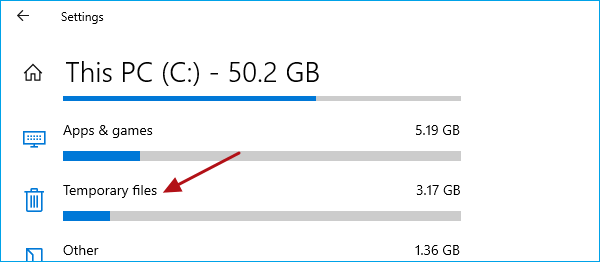

Follow these steps to delete unnecessary files.ġ) Search Disk Cleanup on the start menu and open it.Ģ) The first window asks you for the drive to begin the temp files searching process.

To delete the contents of the Temp folder using Command Prompt, type this command and hit enter.ĭel /q/f/s %temp%\* Deleting Temporary Files using Disk Cleanupĭisk Cleanup is a system tool that allows you to clean temp files and folders as well as other unnecessary files from your computer. In order to open the command prompt on your computer, search CMD on the start menu or right-click on the start menu and select Command Prompt or press Start+R from your keyboard. Like RUN command, you can also use the command prompt to clean temporary files in Windows 10.

Delete Temp Files in Windows 10 using CMD The best thing about the temp files are they don’t affect your system after deleted. Here you can delete any of the temporary files that you think you do not need or you can delete all of them. This will open the temp folder containing temporary files and folders. Follow the below procedure to make this process faster.ġ) Type Run into the search box or right-click on the start menu and select Run or press Windows + R key on your keyboard to open run command box.Ģ) Type %temp% into the box and then click on the OK button. Run command box is the quickest way that most of the people use their computer for cleaning temp files. Delete Temporary Files in Windows 10 using RUN Let’s follow them to perform this task much faster. There are other options also available to do this task. This is the default way on how to delete temporary files in Windows 10 in bulk.

After that click on the “ Remove files” button to delete these files. You might choose the last option, if you don’t want to roll it back. Here you’ll see all drives of your computer.ģ) Under the Storage section, click on “ This PC (C:)“.Ĥ) Scroll the list down and click on the “ Temporary files” option.ĥ) Next up, you have to select the items you want to delete permanently from your computer such as Temporary files, Downloads folder, Empty recycle bin and Previous version of Windows. 1) Open Settings by clicking on the Start Menu > Settings or press Windows + I key from your keyboard.Ģ) After that, navigate to Systems > Storage.


 0 kommentar(er)
0 kommentar(er)
